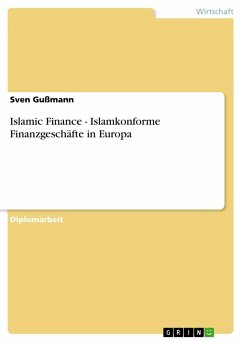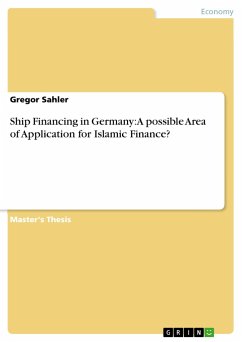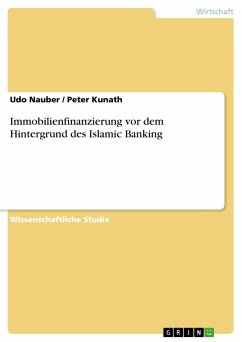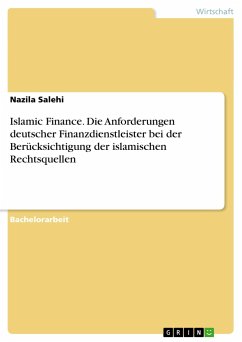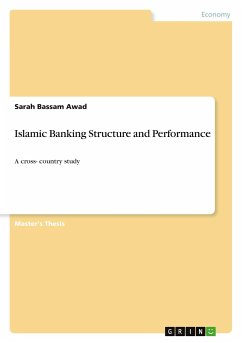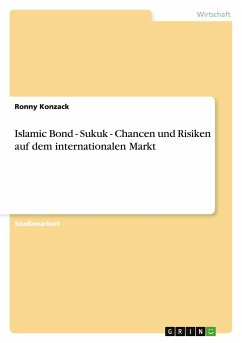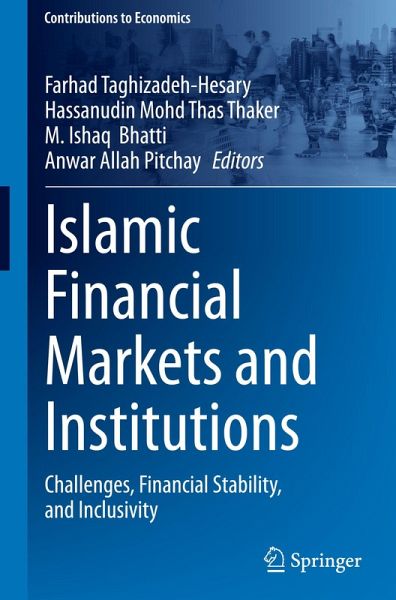
Islamic Financial Markets and Institutions
Challenges, Financial Stability, and Inclusivity
Herausgegeben: Taghizadeh-Hesary, Farhad; Mohd Thas Thaker, Hassanudin; Bhatti, M. Ishaq; Allah Pitchay, Anwar

PAYBACK Punkte
65 °P sammeln!
Islamic finance has experienced significant growth, particularly in the Middle East, driven by financial innovation and the expansion of asset securitization. This progress is crucial for the future development of Islamic financial institutions (IFIs), but it also requires a strong regulatory framework and effective monetary policies to ensure stability and inclusivity. Maintaining compliance with Islamic law while addressing modern financial challenges presents unique complexities, from risk-sharing mechanisms to the integration of digital banking.This book examines the evolving landscape of ...
Islamic finance has experienced significant growth, particularly in the Middle East, driven by financial innovation and the expansion of asset securitization. This progress is crucial for the future development of Islamic financial institutions (IFIs), but it also requires a strong regulatory framework and effective monetary policies to ensure stability and inclusivity. Maintaining compliance with Islamic law while addressing modern financial challenges presents unique complexities, from risk-sharing mechanisms to the integration of digital banking.
This book examines the evolving landscape of Islamic finance, exploring the challenges that IFIs face, including limited financial inclusion, the dominance of non-Muslim ownership, and gaps in regulatory oversight. It emphasizes the importance of transparency, standardized regulations, and incorporating Shariah compliance into financial supervision. Through empirical research and case studies from various markets, includingIran, Malaysia, and Indonesia, the book highlights the risks and opportunities within Islamic financial markets.
Key topics include financial inclusion, regulatory reforms, the resilience of Islamic finance during economic crises, and the role of fintech in expanding access to Islamic financial services. The book also discusses innovative financial instruments, such as Islamic crowdfunding, green sukuk, and Takaful, highlighting their potential to promote sustainable development. It argues that while Islamic finance offers ethical and stable alternatives to conventional banking, stronger governance, technological integration, and policy reforms are necessary to ensure its long-term viability.
Bringing together insights from leading researchers and practitioners, this book provides a comprehensive analysis of the current state and prospects of Islamic finance. It is an essential resource for policymakers, financial regulators, and industry professionals looking to enhance financial stability and inclusivity within the Islamic financial system.
This book examines the evolving landscape of Islamic finance, exploring the challenges that IFIs face, including limited financial inclusion, the dominance of non-Muslim ownership, and gaps in regulatory oversight. It emphasizes the importance of transparency, standardized regulations, and incorporating Shariah compliance into financial supervision. Through empirical research and case studies from various markets, includingIran, Malaysia, and Indonesia, the book highlights the risks and opportunities within Islamic financial markets.
Key topics include financial inclusion, regulatory reforms, the resilience of Islamic finance during economic crises, and the role of fintech in expanding access to Islamic financial services. The book also discusses innovative financial instruments, such as Islamic crowdfunding, green sukuk, and Takaful, highlighting their potential to promote sustainable development. It argues that while Islamic finance offers ethical and stable alternatives to conventional banking, stronger governance, technological integration, and policy reforms are necessary to ensure its long-term viability.
Bringing together insights from leading researchers and practitioners, this book provides a comprehensive analysis of the current state and prospects of Islamic finance. It is an essential resource for policymakers, financial regulators, and industry professionals looking to enhance financial stability and inclusivity within the Islamic financial system.




